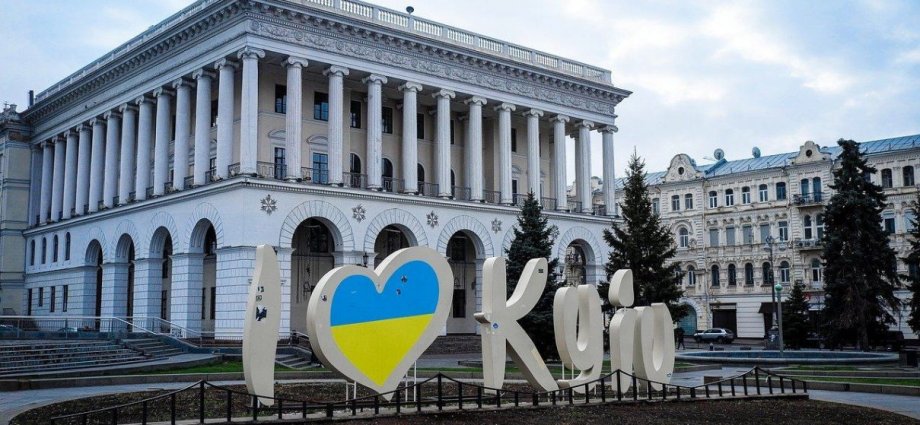Russian president, Vladimir Putin, and Joe Biden, the US president, have held a two-hour “virtual summit” to discuss the escalating tensions in and around Ukraine. Biden voiced concerns about the build-up of Russian troops on the Ukraine border, while Putin sought assurances against the further eastward expansion of Nato. Little was reportedly settled, but the two leaders agreed to appoint representatives to “rapidly begin a discussion of this complex, confrontational situation”.
Three decades ago, on December 8, 1991, the Soviet Union was formally dissolved and Russia, Ukraine and Belarus set up the Commonwealth of Independent States. Now, 30 years on, the three countries are locked in a dangerous troika of confrontation and brinkmanship that threatens to plunge the region into further conflict.
The post-Soviet political history of Belarus and Ukraine is interesting on many levels. The former turned into Europe’s only dictatorship, heavily dependent on Russia for its survival. The latter, meanwhile, is a transitional democracy which has vacillated between Russian and western influence over the years. This in itself led to tensions which boiled over in 2014, when pro-EU protests in Ukraine led to the collapse of the pro-Russian government, Russian annexation of Crimea and conflict with separatists in eastern Ukraine.
Hostilities in eastern Ukraine have continued ever since. The mobilisation of Russian troops in April in occupied Crimea as well as on the border with eastern Ukraine near Donetsk, held by pro-Russian separatist groups, fuelled fears Moscow might be planning an invasion. In the end, this didn’t happen, but during October and November there has been another major buildup of troops in the region. Given the amount of military hardware already on the ground, Russia’s intentions are once again worrying Nato planners.
Nato foreign ministers met in Riga, Latvia, at the end of November to discuss the situation. The alliance’s secretary general, Jens Stoltenberg, told journalists that: “There is not clarity about the Russian intentions but there is an unusual concentration of forces for the second time this year. We see heavy armour, drones, electronic warfare systems and tens of thousands of combat-ready troops.”
By early December, US defense secretary Lloyd Austin issued a statement that an invasion could happen as soon as early 2022 and declared that the US was “committed to helping Ukraine defend its sovereign territory”.
But doubts remain among regional experts, as well as between the US and Europe, about the threat of an imminent attack. There is a sizeable body of opinion that Moscow is using pressure in the region as a negotiating tool to deter Nato from expanding eastwards, with one Ukraine-based analyst speculating that Putin aims to “coerce the west to start the new Yalta talks with Russia”. This is a reference to the 1945 summit between Joseph Stalin, Winston Churchill and Franklin D Roosevelt in the Crimea which established eastern Europe as belonging to the Soviet Union’s sphere of influence.
The current situation does, nevertheless, appear volatile for several reasons.
Potential flashpoints
First, the stockpile of Russian military equipment in the area would allow for a rapid mobilisation. Similar concerns over leftover Russian military equipment were also raised in Belarus after the Zapad-2021 joint exercises in September. With Minsk now announcing more exercises along Belarus’ southern border with Ukraine in the “medium term”, the potential for a swift military offensive looks more threatening.
There is also the question of the Nord Stream 2 gas pipeline. The west sees the pipeline, which – when completed and operational – would allow Russia to bypass Ukraine when supplying gas to Europe, as a potential target for sanctions.
Meanwhile, in Europe, the current energy crisis is underlining the continent’s dependence on Russian gas, with Germany the largest consumer. As Gazprom – Russia’s state-owend gas company – anticipates that next year’s energy market will remain equally strained, implicit pressure on Germany from European consumers and businesses to give final approval to the pipeline is high. If approval isn’t granted, rising utility bills and subsequent public discontent seem likely.
Plausible deniability
In the past, such as during the 2014 annexation of Crimea and the ongoing crisis in the Donbas region, Russia has relied on more covert strategies, such as exploiting Ukraine’s internal ethno-linguistic divisions between Ukrainian and Russian speakers to stoke domestic tensions and unrest.
Moscow has also been able to rely on the influence of Russia-friendly Ukrainian oligarchs, including Viktor Medvedchuk, to stoke discontent and promote anti-western rhetoric. This is especially effective, given their influence over large parts of the population – especially in the industrial east of the country – and control of national media channels.
This strategy has allowed Russia to deny its involvement in the Donbas, framing the issue as an internal challenge. This is a message the Kremlin is likely to continue to promote.
Simmering tensions
Recent news reports suggest Biden may be prepared to offer concessions around Ukraine’s Nato membership. But the potential for more flare ups, especially in the Donbas, in 2022 remains high.
Meanwhile, the growing role of Turkey in Ukraine’s defence strategy – such as through the recent sale of Turkish drones to Kyiv – will serve as a key flashpoint. Moscow, after all, is strongly opposed to the weaponisation of Ukraine, particularly by Nato – of which Turkey is a member.
In any event, Moscow’s perception of western ambitions in Ukraine, together with Nato military exercises in the Black Sea, will continue to fuel tensions between the two sides. And given Russia’s growing involvement in Belarus, and its military presence in the breakaway Moldovan region of Transnistria, near Ukraine, fears of Moscow’s military adventurism and the potential for incursions into Ukraine are unlikely to dissipate any time soon.
Liana Semchuk does not work for, consult, own shares in or receive funding from any company or organisation that would benefit from this article, and has disclosed no relevant affiliations beyond their academic appointment.











